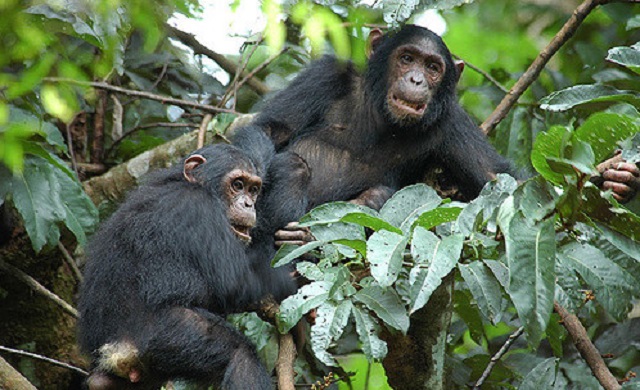
Community in Bunyoro lives under terror of primates. But who is to blame?
Kampala, Uganda | JIMMY SIYA| Kasooha central forest reserve in Kasongoire Parish in Masindi District, in the Bunyoro region of western Uganda is chimpanzee country. The large apes are terrorising residents. They eat their crops, attack children and women, and make life hard for humans.
Many residents have horror stories involving the chimps. They tell stories of how they have wrestled a chimpanzee and survived. But some end tragically.
Mariam Mirungi, 14, tells the story of how she fought a chimpanzee. She was only four at the time and was home alone when the chimpanzee pounced. She was lucky to live but the ape bit her and left her with permanent memory loss. Unlike most of her peers who go to school, she has not gone to school.
Issa Isingoma Mugurusi belongs to another group – of indirect sufferers of chimp attacks. Mugurusi’s daughter had gone to her garden on the forest edge. She placed the seven-month-old baby under a shed as she started working. Unknown to her, a chimpanzee in a nearby thicket was watching, and monitoring her movements. It jumped from its hideout, grabbed the baby, and dashed into the bush.
Mugurusi, 76, says her daughter had no chance of rescuing the baby on her own. She raised an alarm that attracted neighbours in nearby gardens. Armed with sticks, clubs and pangas, they mounted a search but the chimp climbed a tree with the baby. When the noise intensified, the chimp dropped the baby. Mugurusi says his grandchild died instantly.
The baby’s body was taken to the nearby Masindi Hospital for a postmortem to confirm cause of death and evidence to seek justice from the national conservation agency—the Uganda Wildlife Authority. But Mugurusi says they did not receive much help.
“They simply said we had disturbed the chimpanzees and that the penalty for killing a chimpanzee ranges between 10 to 15 years in prison, so we had to give up,” Mugurusi recalls. The incident happened 10 years ago in 2009 but Mugurusi recalls it like it happened yesterday.
Chimpanzees on the loose
Baguma Moses, who neighbours Mugurusi, blames the chimpanzee behaviour towards them to Kinyara Sugar Works, which he says, destroyed a forest that was home to most of the chimps.
“As communities we are paying the price for the encroachers like Kinyara sugar Works who cleared the 40 sq km Rwebitela forest reserve for sugar cane farming,” he says.
“The forest used to host chimps, they could sleep and also get their food there but now chimps are on the constant search for new places to stay.”
Ugandan conservationists estimate that Uganda has about 5000 chimpanzee in the wild, mainly in western Uganda. The primary threats to chimpanzees in recent years have been; habitat destruction (deforestation), logging, hunting and disease.
All these are blamed on the rapid human population growth. Conservationists fear this could destroy tourism activities that directly depend on wild ape populations like gorilla, baboons and chimpanzee.
But it appears all is not lost.
Jane Goodall intervenes
The chimpanzee attacks in Kasooha sound familiar across much of equatorial Africa where the primates once roamed freely in their millions.
Today conservation figures put the number of chimpanzees in what is known as the chimpanzee belt at about 300,000. The belt stretches from southern Senegal through central Africa to western Tanzania.
 The Independent Uganda: You get the Truth we Pay the Price
The Independent Uganda: You get the Truth we Pay the Price



